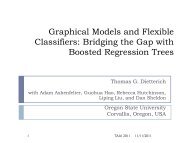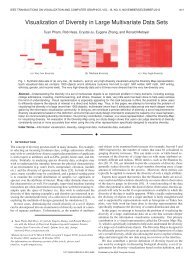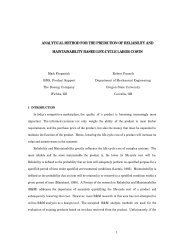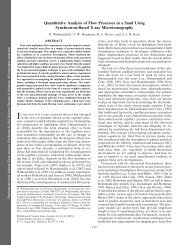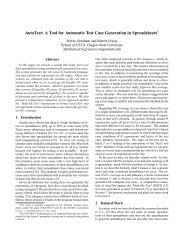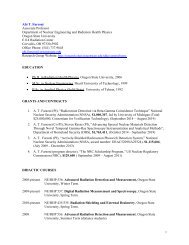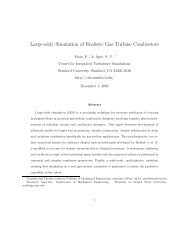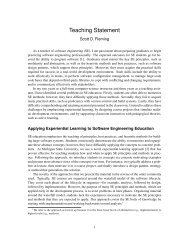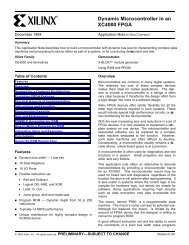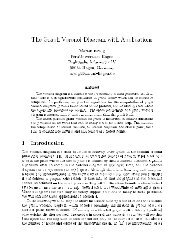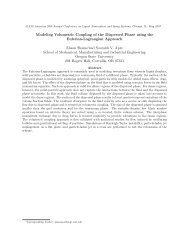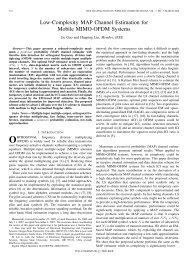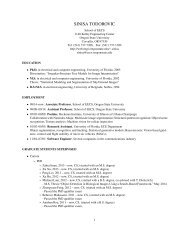DNS of Low Reynolds Number Flow Dynamics of a Thin Airfoil with ...
DNS of Low Reynolds Number Flow Dynamics of a Thin Airfoil with ...
DNS of Low Reynolds Number Flow Dynamics of a Thin Airfoil with ...
- No tags were found...
You also want an ePaper? Increase the reach of your titles
YUMPU automatically turns print PDFs into web optimized ePapers that Google loves.
Figure 7: Effect <strong>of</strong> static actuation <strong>of</strong> the leading edge on flow structure as well as lift and drag for α = 20 ◦ ,Re = 14700: (a-d) out-<strong>of</strong>-plane vorticity contours (ω z c/U ∞ = ±60) for θ = 0 ◦ , (e-h) out-<strong>of</strong>-plane vorticityfor θ = 20 ◦ (snapshots are tU ∞ /c = 2.06 apart) , (i) temporal evolution <strong>of</strong> drag coefficient for θ = 0, 20 ◦ , (j)temporal evolution <strong>of</strong> lift coefficient for θ = 0, 20 ◦ .The effect <strong>of</strong> static actuation <strong>of</strong> the leading edge,<strong>with</strong> θ = 20 ◦ for an angle <strong>of</strong> attack (α) <strong>of</strong> 20 ◦ , was firstinvestigated (see figure 7). For no actuation, the lift anddrag coefficients vary significantly for this high angle <strong>of</strong>attack, showing fluctuations due to passage <strong>of</strong> vorticalstructures pas the leading edge. The flow is highly separated<strong>with</strong> a large wake region.With simple staticactuation, the magnitude <strong>of</strong> the mean drag coefficient isreduced (from 0.502 <strong>with</strong>out actuation to 0.369 <strong>with</strong> actuation),whereas the mean lift coefficient is not alteredsignificantly (from 1.03 <strong>with</strong>out actuation to 0.97 <strong>with</strong>actuation). Also <strong>with</strong> actuation, the range over whichthe lift and drag coefficients oscillate are reduced significantly.The mean lift-to-drag ratio is increased from 2.06Figure 8: Effect <strong>of</strong> dynamic actuation <strong>of</strong> the leadingedge on flow structure as well as lift and dragfor α = 0 ◦ , Re = 14700: (a-d) out-<strong>of</strong>-plane vorticitycontours (ω z c/U ∞ = ±60) for ∆θ = ±10 ◦ at10 Hz, (e) temporal evolution <strong>of</strong> drag coefficient,(f) temporal evolution <strong>of</strong> lift coefficient.(<strong>with</strong>out actuation) to 2.63 (<strong>with</strong> actuation), a 27.67%increase. These results are obtained on the baseline grid, <strong>with</strong> similar levels <strong>of</strong> increase in mean lift-to-drag6



